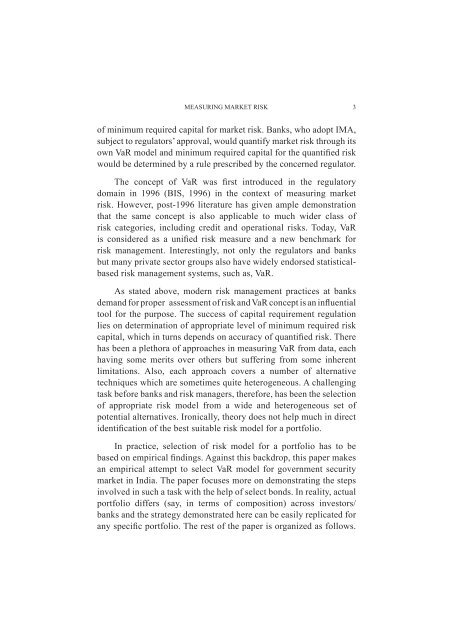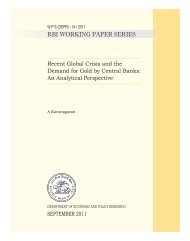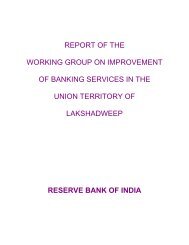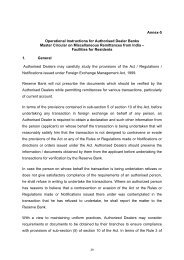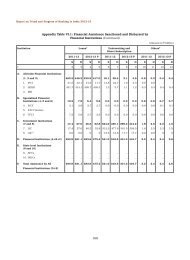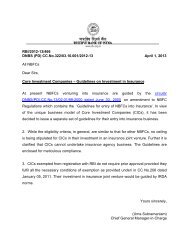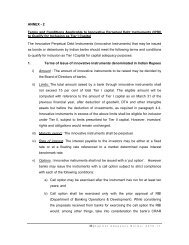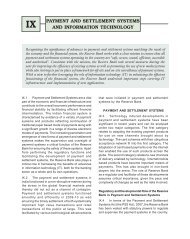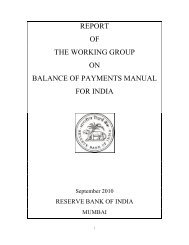Measuring Market Risk - Reserve Bank of India
Measuring Market Risk - Reserve Bank of India
Measuring Market Risk - Reserve Bank of India
Create successful ePaper yourself
Turn your PDF publications into a flip-book with our unique Google optimized e-Paper software.
MEASURING MARKET RISK 3<br />
<strong>of</strong> minimum required capital for market risk. <strong>Bank</strong>s, who adopt IMA,<br />
subject to regulators’ approval, would quantify market risk through its<br />
own VaR model and minimum required capital for the quantified risk<br />
would be determined by a rule prescribed by the concerned regulator.<br />
The concept <strong>of</strong> VaR was first introduced in the regulatory<br />
domain in 1996 (BIS, 1996) in the context <strong>of</strong> measuring market<br />
risk. However, post-1996 literature has given ample demonstration<br />
that the same concept is also applicable to much wider class <strong>of</strong><br />
risk categories, including credit and operational risks. Today, VaR<br />
is considered as a unified risk measure and a new benchmark for<br />
risk management. Interestingly, not only the regulators and banks<br />
but many private sector groups also have widely endorsed statisticalbased<br />
risk management systems, such as, VaR.<br />
As stated above, modern risk management practices at banks<br />
demand for proper assessment <strong>of</strong> risk and VaR concept is an influential<br />
tool for the purpose. The success <strong>of</strong> capital requirement regulation<br />
lies on determination <strong>of</strong> appropriate level <strong>of</strong> minimum required risk<br />
capital, which in turns depends on accuracy <strong>of</strong> quantified risk. There<br />
has been a plethora <strong>of</strong> approaches in measuring VaR from data, each<br />
having some merits over others but suffering from some inherent<br />
limitations. Also, each approach covers a number <strong>of</strong> alternative<br />
techniques which are sometimes quite heterogeneous. A challenging<br />
task before banks and risk managers, therefore, has been the selection<br />
<strong>of</strong> appropriate risk model from a wide and heterogeneous set <strong>of</strong><br />
potential alternatives. Ironically, theory does not help much in direct<br />
identification <strong>of</strong> the best suitable risk model for a portfolio.<br />
In practice, selection <strong>of</strong> risk model for a portfolio has to be<br />
based on empirical findings. Against this backdrop, this paper makes<br />
an empirical attempt to select VaR model for government security<br />
market in <strong>India</strong>. The paper focuses more on demonstrating the steps<br />
involved in such a task with the help <strong>of</strong> select bonds. In reality, actual<br />
portfolio differs (say, in terms <strong>of</strong> composition) across investors/<br />
banks and the strategy demonstrated here can be easily replicated for<br />
any specific portfolio. The rest <strong>of</strong> the paper is organized as follows.


